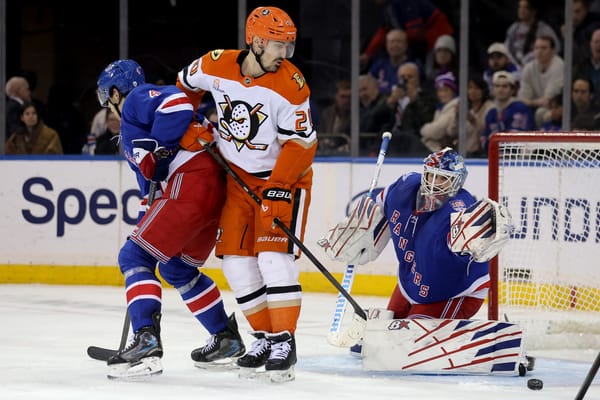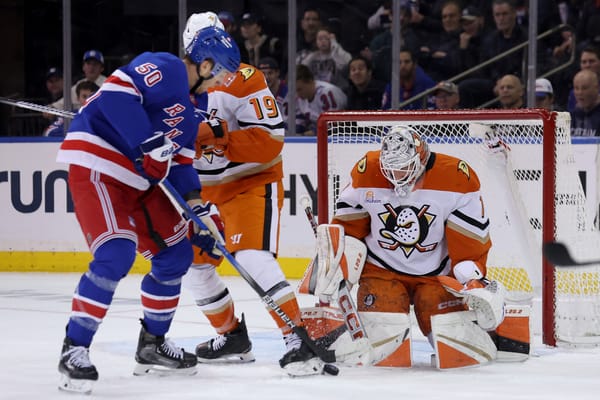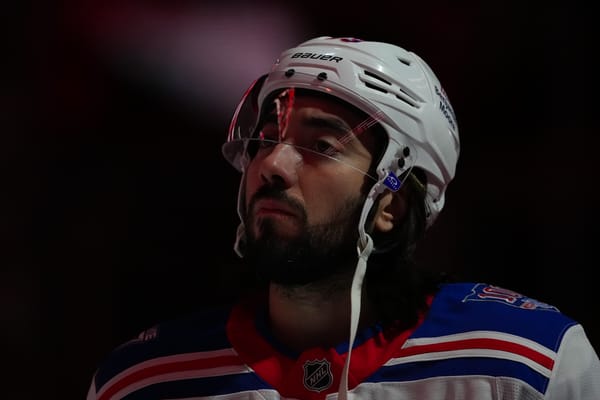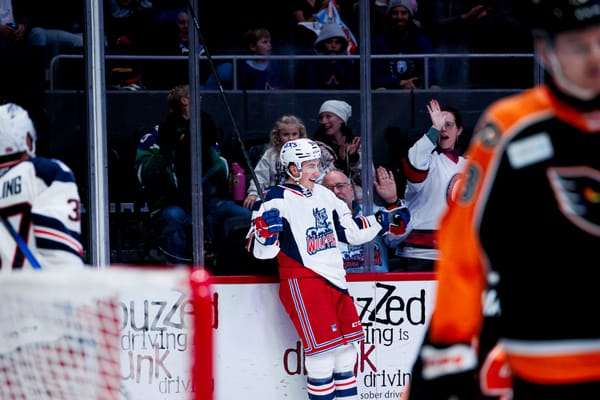What will keeping Ryan Strome cost the Rangers?
One of the biggest decisions looming over New York Rangers’ General Manager Jeff Gorton this offseason is what to do with restricted free agent center Ryan Strome. The Rangers, who are thin down the middle, have good cause to keep him in town.
The “TL;DR” on Strome is pretty straightforward: he was taken 5th overall in 2011, is now in his late 20s, and has turned his career around on Broadway. Strome, a fine playmaker who has a bad track record of taking too many penalties, made himself indispensable to the Rangers in this past season, becoming invaluable to a team that has been stumbling its way through the development of young centers like Filip Chytil, Brett Howden, and Lias Andersson.
Most importantly, he’s a center with a right-handed shot who can complement Panarin.
On July 16, 2018, Strome signed a two-year deal with the Edmonton Oilers that carried a $3.1 million AAV — or 3.89 percent of the 2018-19 salary cap. His next contract will take a bigger bite out of the cookie and all signs point to Strome wanting to stay in New York.
“I’m hoping that I can be a part of [the Rangers]” Strome said recently on the ESPN On Ice podcast. “I let my agent know what I want to do, I guess we’ll see what happens ... this kind of team, with where it’s going, I want to be a part of it.”
According to CapFriendly.com, the Rangers have 16 players under contract for next season with $13,466,867 in cap space to work with. That number could change dramatically as a result of offseason deals and departures — unceremonious or otherwise — but, for now, that’s the number we’re working with. There are a lot of issues to consider, including the flat cap of $81.5 million for the next few years due to the pandemic and the impact of $6,083,333 in dead cap from the Kevin Shattenkirk buyout.
Like Strome, Tony DeAngelo, Alexandar Georgiev, Brendan Lemieux, and Phil Di Giuseppe are all RFAs. Jesper Fast is the only pending unrestricted free agent who the Rangers will want to bring back. He, too, is due for a pay bump from his current cap hit of $1.85 million — 2.46% of the salary cap when he signed in 2017. That goes double for the ever-polarizing DeAngelo, who was fourth in the NHL in scoring (53 points in 68 games) among defenders this season. He and Strome are both arbitration eligible.
The Rangers have a choice to make: sign Strome as a stop-gap for a year or two, extend him long-term, or cut ties. The most palatable solution for a litany of reasons is the first path, which preserves the status quo. Letting Chytil develop as the third line center and keeping Strome and Panarin together has plenty of appeal.
The problem is we don’t see many “1B” or second line centers who are Strome’s age signing short — albeit lucrative — deals. One noteworthy exception is Marcus Johansson, who signed a two-year, $9 million deal with the Buffalo Sabres last summer.
Other deals to keep in mind when contemplating Strome’s next payday are Charlie Coyle’s $5.25 million AAV over six years with the Bruins and Jean-Gabriel Pageau’s six-year deal worth $5 million per with the Islanders. Both, though, are more middle-six centers than ‘1B’s. Of course, there’s also Kevin Hayes’ seven-year deal that pays him just over $7.1 million with the Flyers and the Islanders’ Brock Nelson’s $6 mill AAV over six to consider when looking at Strome.
All of these deals were signed after Nelson’s pact with the Islanders on May 23, 2019, which makes them contracts that Strome’s agent and the Rangers will have in mind when they are negotiating.
Strome was a 0.70 P/GP player over the past two years, with 133 of his 151 games being played in a Rangers sweater. Of the players listed above, Hayes was the closest to Strome in production (0.67) in the two years before he signed his massive deal with Philadelphia. However, he had five years of NHL experience and three consecutive seasons scoring at least 44 points at the time of his signing. Strome has seven years of experience and put up 34 points in 2017-18 and 35 points in 2018-19.
All of this points to Strome’s market value, in terms of rough AAV, being well above Mika Zibenajd’s current $5.35 million cap hit. Depending on the term, a two or three year deal could carry a price tag in the neighborhood of $5.75 million in cap space, or 7.05 percent of the total cap. That number could come down due to Strome’s desire to remain a Ranger, but this next contract will be the most lucrative of his career and it is already being impacted by COVID-19’s flat cap.
So, it’s entirely possible the Rangers could find themselves in a position where they have to pick and choose between Strome and DeAngelo. The team needs Strome more in the short term but, in a vacuum, DeAngelo is more valuable because of youth and skill set. However, it’s hard to picture a scenario where the Rangers move forward with DeAngelo, Adam Fox, and Jacob Trouba on the right side because of Trouba’s contract.
The reality is that the Rangers need to make some big decisions before they start negotiating with Strome. Chances are, these decisions have already been made or are approaching resolution behind closed doors. Henrik Lundqvist’s future is at the top of that list, and the Rangers’ cap situation will change dramatically if Hank retires or if he’s bought out.
In an ideal world, the Rangers would ink Strome to a two-year deal in the neighborhood of $11 million so that his contract comes off the books at the same time as Zibanejad’s. We may not know what is going to happen with Strome, DeAngelo, Georgiev, and Lundqvist, but one thing’s for sure: the Rangers will need to break the piggy bank to extend Zibanajed in two years’ time.
All salary information courtesy of CapFriendly.com.




